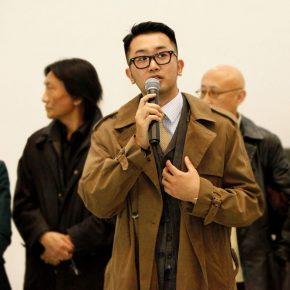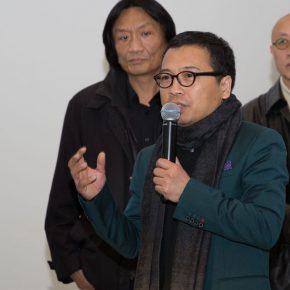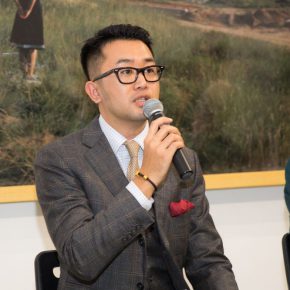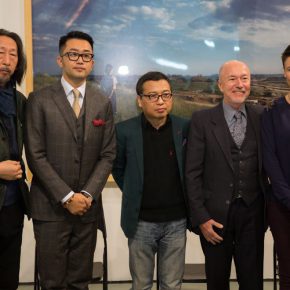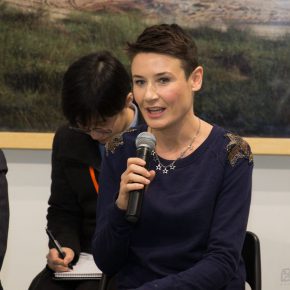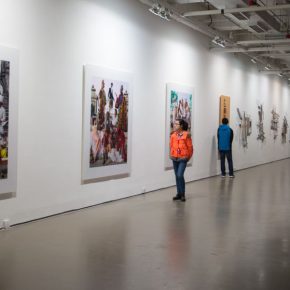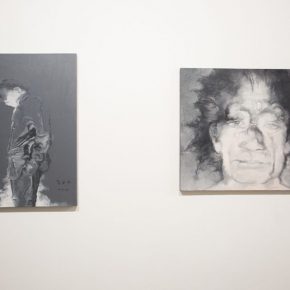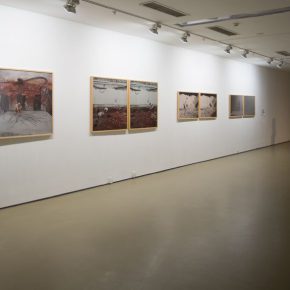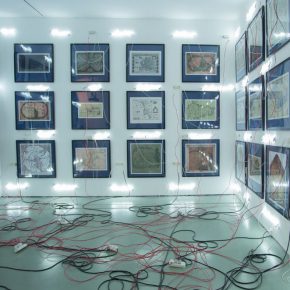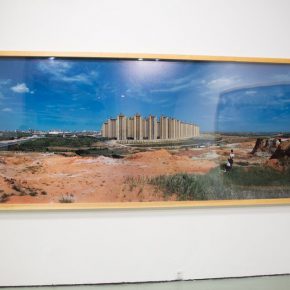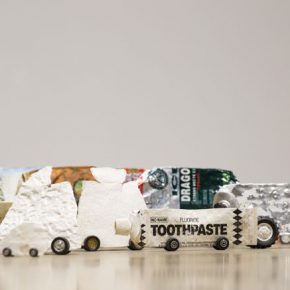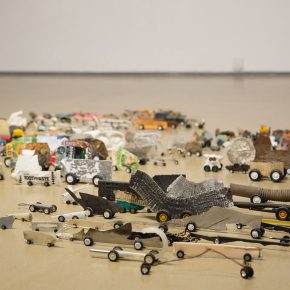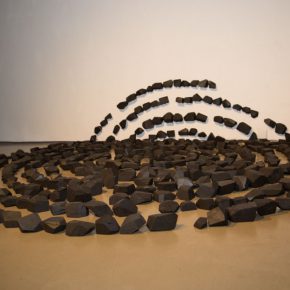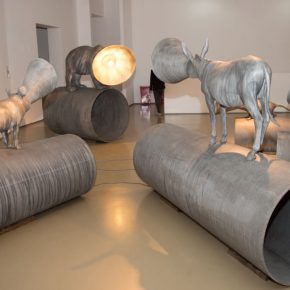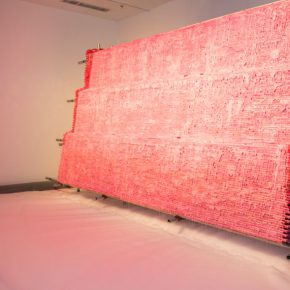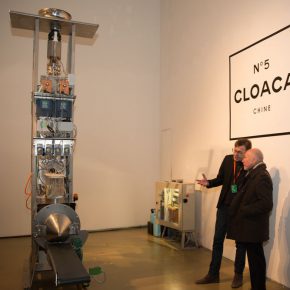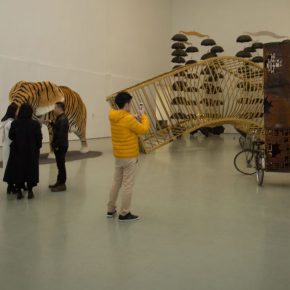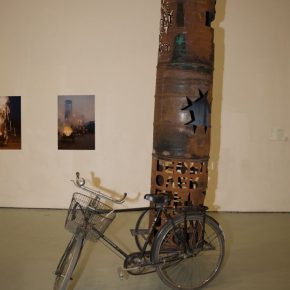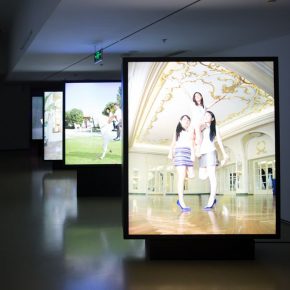
The end of 2016 is arriving, in this year Britain exited from the EU, the refugee crisis is accelerating and the right-wing movement is rising, we have experienced a series of political earthquakes including Trump being elected president of the US, Italian Prime Minister Matteo Renzi resigning, French Prime Minister Fran?ois Hollande announcing he would not seek the re-election, an impeachment bill of the President of South Korea Park Geun-hye. The complete coverage of globalized information technology allows people access information resources quicker, we have already bidden farewell to the ancient times when information was slowly transmitted. The critic Jonathan Harris pointed out that today’s world has entered a new phase of globalization that went beyond liberalization and the hegemony by the United States and Western European countries and nations – which is more disordered, complex, mixed, but also brought the potential to realize a more equal world.
On December 10, 2016, the Third Today’s Documents opened at the Today Art Museum. This exhibition is the second international academic exhibition after the first one that was held 6 years ago. It is still curated by the independent curator Huang Du and the Cuban curator Gerardo Mosquera, they invited 50 artists (groups) from different countries such as China, Mexico, Spain, Brazil, India, Russia, South Africa and South Korea, to a discussion on the diversified artistic state under different cultural contexts and forms of development formed in the new stage of globalization.
It is entitled in three languages: BRIC-à-BRAC (French), The Jumble of Growth (English) and 另一種選擇(Chinese), and it is divided into four parts: The Jumble of Growth, Chaotic Space, Discourse Practice and Individual Narrative and Microscopic Bodies. The idea behind these three names is that economic and social transformations are now happening all over the world. When the curator was interviewed by CAFA ART INFO, he said the exhibition started from the observation of the “BRIC” and similar developing countries, “We are not talking about the developed countries, nor the so-called backward countries, but those intermediate zones.”
It can be said that the Third Today’s Documents clearly puts forward a sharp cultural proposition, gains new examination and observation of “contact zones” in contemporary art from the perspective of global localization and stresses culture differences in the context of globalization. Via vivid and philosophic images, the show interprets the rise of fast emerging countries, represented by BRICs, and the deepening crisis in globalization and capitalism: a relationship of contradiction, conflict, interdependence and competition. The curator Gerardo Mosquera was one of the founders of the Havana Biennial, and he called the exhibition an “ambitious” exhibition which aims to explore the changes in a variety of areas such as economy, society and culture, and through a variety of ways to explore how art can participate in or respond to these changes, and explore these changes that bring society and individuals influences.
The emerging market economy is introduced to countries and becomes worldwide. The new and powerful market economy is emerging from a serious shortage of development. They are experiencing rapid economic growth, industrial revolution, a large expansion of the demands of the domestic markets, rapid and uneven modern development. Speed and scale are focused by the “BRICs” and the “developing markets” of nontraditional capitalism, which often means that the disorganized, wide developing process is based on quantity rather than quality or social co-operation. Chinese artist Weng Fen’s photography “Staring at Ordos” records the urbanization of emerging cities of northern China – corresponding to the distant towering skyscrapers, there is a great block of barren ruins, while people only see the girl’s back rather than her face; Du Zhenjun’s “Babel World” series uses? synthetic photographs for a discussion on the expansion and chaos of large cities; “City Portraits” by Marcos Ramirez Erre uses data gathered from the Internet as well as aluminum alloy – to establish a high-tech map (the aluminum alloy is Silicon Valley’s most advanced and commonly used material in the high-tech industry), and to represent the demographic distribution of ethnic groups in Silicon Valley and the surrounding area.
The exhibition does not avoid the social features of the related political regions, but faces the voices of the artists in the region – the self-consciousness of resistance and fighting based on the absorption of other cultures. In this exhibition, one can get a glimpse of the artist’s unique understanding of the culture. Mexican artist Marcela Armas (b.1976)’ work “I-Machinarius” represents an inverted map of Mexico, designed on the wall by a chain that moves noisily and irregularly through the action of several cogwheels operated by a hidden engine. The piece is a chaotic mechanism that leaks oil onto the wall, which spills down to the floor; Russian artists group AES+F shows “The Feast of Trimalchio”, originating form the most celebrated chapter of a satirical novel by ancient Roman poet Gaius Petronius (c. 27-66 AD) titled “The Satyricon”, to express their perception of the economic transformation in this globalized market. The artwork consists of three dramatic images, which were titled by the artists as “The Success of Asia”, “The Rise of Africa” and “The Decline of Europe”. Wang Guangyi’s installment “Kings Have Long Arms” uses neon lights connected with the maps which were collected from various countries, to reveal the artist’s rethinking of “geopolitics”. Kendell?Geers’ “Prayer Wheel (Left Over People)” combines the ready-made oil drums with Chinese fireworks to form a celebratory performance, connecting the South African and traditional Chinese hybrid culture; Gao Weigang’s installation “Consume” showcases a distorted and inflated shape that is like the human stomach and it is an allegory of the excessive consumption of globalization; Fernando Sánchez Castillo’s “Terra Cotta Warriors” uses the toy industry to reflect social ideology, which is a responded mechanism that is produced depending on the social development and changes of different countries.
In addition to some straightforward expressions mentioned above, there are some artists who respond in more obscure ways, to expound the profound insights on contemporary problems in different contexts and cultures. Belgian artist Wim Delvoye’s “Cloaca No. 5” mimics the human digestive system and creates a machine that produces “real” excrement. Cloaca is conceived as a complete enterprise – of its own brand, products and advertisements, Cloaca machines are displayed at museums around the world, and Cloaca’s excreta is packaged and sold to art collectors, from the artistic products to the artistic practice process they are in line with the characteristics of the operation of transnational capital, being full of irony and absurdity; From Ni Haifeng’s works “HS 9703.00” and “HS 9701.10.00”, the artist considers “The Harmonized Commodity Description and Coding System” – also known as “Harmonizing the System” or “HS System” – reviews the cultural representation of the circulation of global commoditization and capital digitalization; Cao Xingyu’s work of performance and video “Spring” considers the body as a container of life politics to reveal the relationship between body, media and art, art and language, language and experience.
The curator Gerardo?Mosquera said the curator consciously avoided the overly discrete or scholarly approach of displaying documents, words and archives, but had chosen the artists and works of strong artistic and aesthetic influences, that could express and expound the complexity of the theme of the exhibition, “We are trying to present a rigorous exhibition, but it is not an exhibition only dedicated to professional art and academic circles, but an exhibition that can attract the public.” The Third Today’s Documents Exhibition examines new areas of contemporary art from the perspective of globalization – the “contact zones” interweave different cultures to collide and converge, regardless of how intense and unequal the “colliding”, these complex and overlapping “contact zones” do not only offer an opportunity to articulate multiculturalism, but also initiate discussions of many issues.
Text by Lin Jiabin, translated by Chen Peihua and edited by Sue/CAFA ART INFO
Photo of Figures by Hu Sichen/CAFA ART INFO


